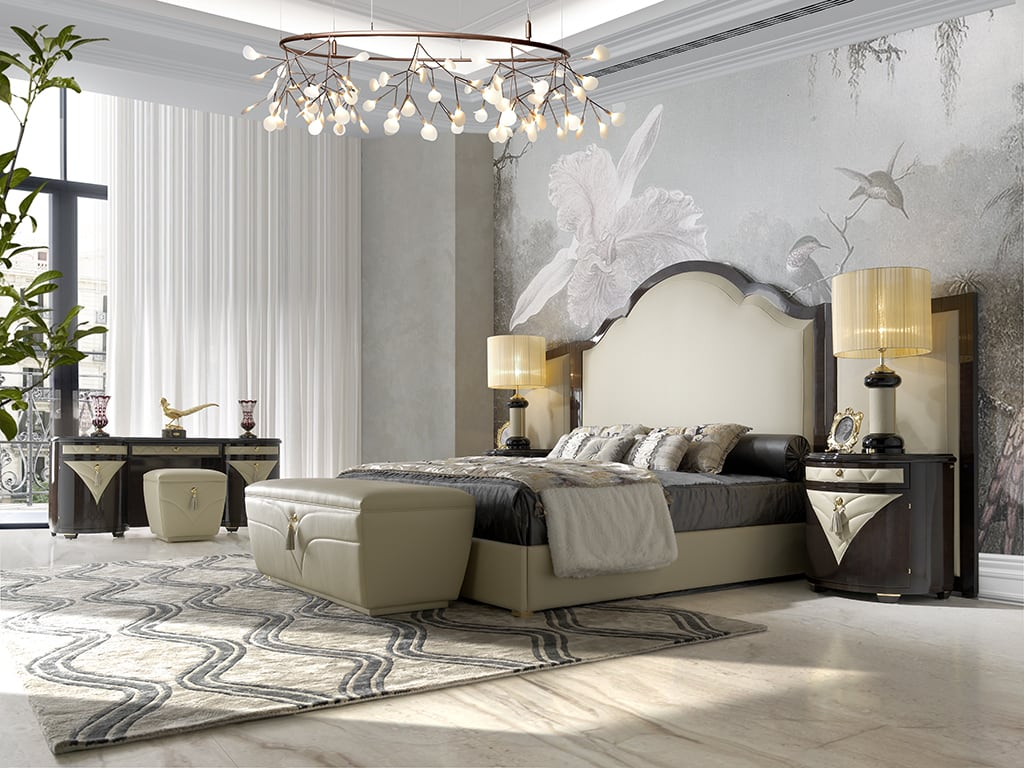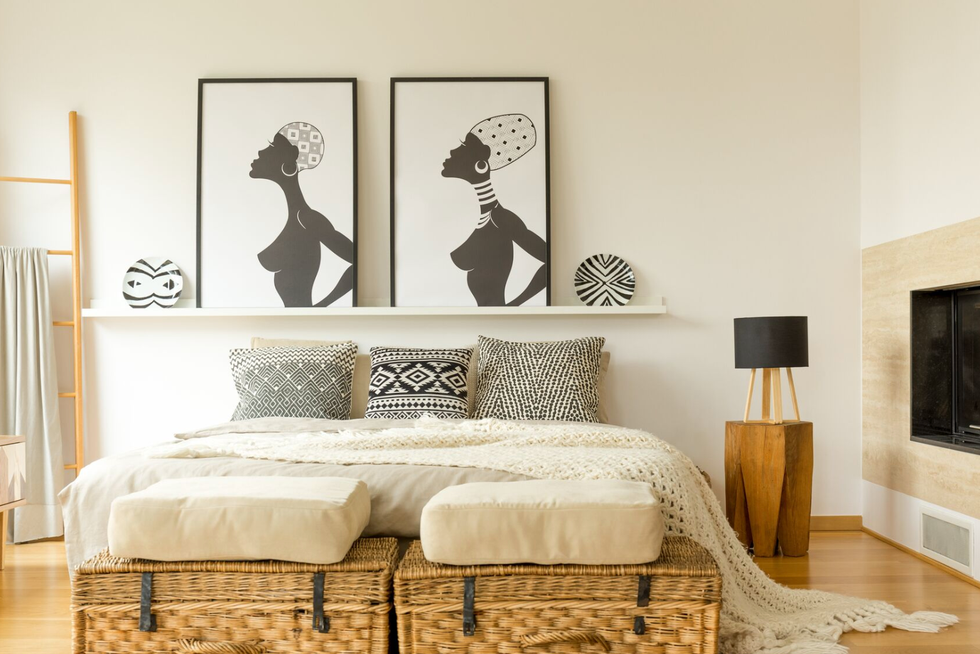Are you interested in adding a touch of elegance and sophistication to your home decor?
If so, let me introduce the Art Deco furniture.
The "Variety Of Art Deco Styles" can solve this problem. Art Deco, a design movement from the 1920s and 1930s, combines modern styles with fine craftsmanship and rich materials. Its diverse range of styles offers something for everyone, whether you're a fan of geometric patterns, streamlined forms, or lavish ornamental details.
So, let's dive into the captivating world of Art Deco furniture and explore how it can transform your living space into a stylish and comfortable haven.
The Hallmarks of Art Deco Furniture

Before diving into the details, it's essential to understand the hallmarks of Deco furniture. Originating in the 1920s and 1930s, the Art Deco movement significantly departed from the flowing motifs of its predecessor, Art Nouveau.
Furthermore, the Art Deco style began the modern design age. It was a revolutionary shift towards simplicity and functionality, yet it held onto an air of luxury and glamour that still captivates interior designers today.
Geometric Forms
The use of geometric shapes characterises Art Deco furniture. Unlike Art Nouveau's fluid lines, Art Deco designs feature precise, angular forms and horizontal surfaces. Moreover, the style peaked with pieces featuring square tapered legs, symmetrical patterns, and stylised geometric motifs.
Rich Colours and Bold Contrasts
Art Deco style is also known for its rich jewel tones and bold contrasts. The vibrant colour schemes were a departure from previous muted palettes.
Additionally, Deep reds, blues, and greens paired with black, chrome, and gold created visually stunning pieces that became focal points in interior spaces.
Use of Luxurious Materials
Finally, the Art Deco style is known for using fancy materials. It often used special woods like mahogany, ebony, and rosewood, and these were sometimes mixed with rich details of ivory or mother-of-pearl.
Furniture designers in France who worked in the Art Deco style also used costly materials such as marble, jade, and a type of shiny paint from Japan. The use of metal details in chrome, brass, or wrought iron made Art Deco furniture feel even more luxurious and glamorous.
The Evolution of Art Deco Furniture

The Art Deco era saw a rapid evolution in furniture design, with the style continually evolving and adapting to new trends. Initially, Art Deco furnishings were heavily influenced by the bold geometric forms of Cubism and the exotic motifs of Egyptian and African art.
However, as the movement progressed, it began to incorporate elements from other styles, such as Bauhaus, modernism, and even Hollywood glamour. This fusion of different influences led to various Art Deco sub-styles, such as Streamline Moderne and Zigzag Moderne, each with its distinct characteristics.
Art Deco furniture designers also embraced new materials and techniques, such as tubular steel and lacquered finishes, reflecting the modern industrial age. This constant evolution and innovation made Art Deco furniture a timeless style that continues to inspire interior design trends today.
Transition from Traditional to Modern
Art furniture illustrated a transition from traditional to modern style. Initially, pieces were meticulously crafted from wood. However, then designers began incorporating materials such as polished metals and mirrored surfaces as the style evolved.
Additionally, This shift bridged the gap between traditional and modern design, retaining traditional furniture's intricate designs and timeless look while adopting the sleek, straight lines associated with contemporary style.
Impact of Technological Advancements
Technological advancements significantly influenced the production and design of Art furniture. New manufacturing technologies allowed furniture designers to experiment with different materials and create pieces with more complex geometric shapes. This also led to mass production, making Art Deco furniture more accessible to the general public.
Identifying Art Deco Furniture

Now that you have a better understanding of the characteristics and evolution of Art Deco furniture, let's take a closer look at the process of identifying a Luxurious Art Deco Bed.
Distinctive Features
Before knowing common materials used in Art furniture, it's essential to understand the distinctive features that set it apart from other styles:
-
Art furniture features geometric shapes and symmetric patterns, providing a balanced aesthetic appeal.
-
Bold and contrasting colours are a signature trait of Art furniture, giving it a vibrant and dynamic look.
-
Luxurious materials like exotic woods or chrome give Art furniture its high-end feel and premium quality.
Common Materials
Let's now explore some of the common materials used in its construction:
-
Due to their rich colours and durability, exotic woods such as ebony, rosewood, and mahogany are often used in Art furniture.
-
Metals like chrome and brass bring a modern touch to Art furniture while ensuring long-lasting construction.
-
Glass, mirror, and black lacquer are frequently used in Art furniture, providing a sleek, contemporary look.
Art Deco Furniture Today
Now that you're familiar with the essential elements of Art Deco furniture and how to identify them, let's explore its relevance in today's world.
Art Deco in Contemporary Interior Design
Here is an analysis of how Art Deco elements are used in modern interior design.
-
Art Deco's distinctive patterns and bold colour schemes are increasingly being incorporated into modern interior design.
-
Luxury furniture items reminiscent of the Art Deco period add visual interest and a touch of glamour to contemporary spaces.
-
Wood, a characteristic feature of Art Deco pieces, is also returning in today's design scene.
Collecting and Caring for Art Deco Furniture
Here are some tips for those interested in collecting and preserving Art Deco furniture.
-
When purchasing, look for genuine antique pieces from the Art Deco period rather than modern reproductions.
-
Regularly dust and clean your Art Deco furniture with a soft cloth to prevent damage from built-up dirt and grime.
-
Avoid exposing wood furniture to direct sunlight, as it can cause fading and warping over time. Use curtains or shades to protect your pieces.
-
Be gentle when handling delicate materials like glass or mother-of-pearl, and avoid using harsh chemicals or abrasive cleaners.
Final words
We hope you liked this guide. With our expert's focus on "Art Deco furniture", you can now easily decide whether you should purchase this unique furniture style or not.
But, we suggest you don't miss the opportunity to add a touch of elegance and sophistication to your home with our exquisite Art Deco pieces.
Remember, a well-chosen piece of furniture serves a practical purpose and enhances your space's aesthetics.
So choose from the Crafted Beds collection today and create a timeless Art Deco look in your home!
 SALE! 10% OFF USE CODE: CRAFTED10
SALE! 10% OFF USE CODE: CRAFTED10






